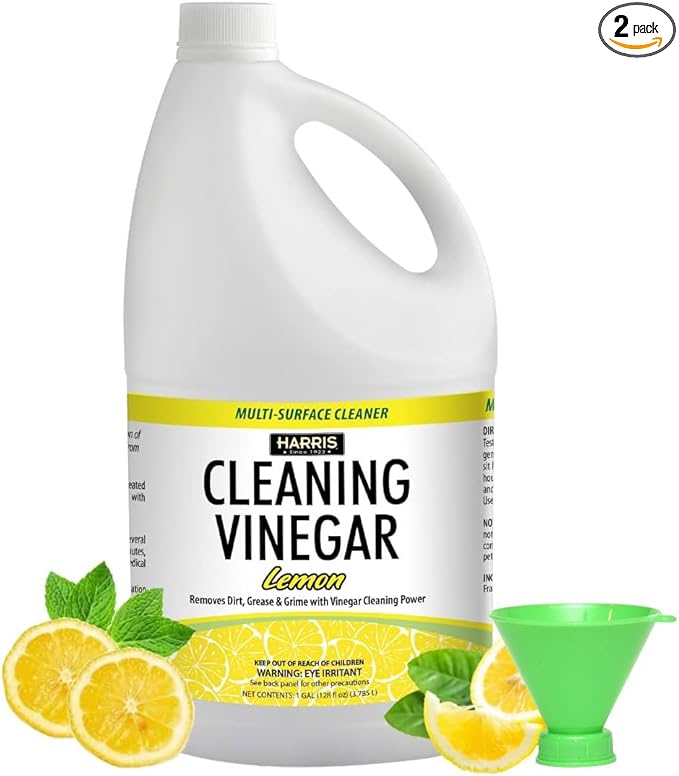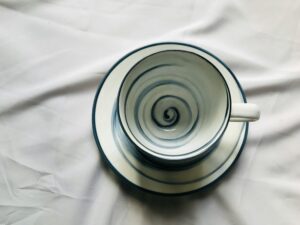If your morning coffee hasn’t been tasting quite as rich or fresh lately, the problem might not be your coffee beans—it could be your coffee maker. Over time, minerals from water, leftover coffee oils, and even mold or bacteria can build up inside the machine, especially in areas you can’t see or reach. This not only impacts the flavor and aroma of your brew but can also slow down the brewing process or lead to more serious machine issues over time. One of the most accessible and cost-effective ways to deep clean your coffee maker is by using something you probably already have in your kitchen: white vinegar.
Table of Contents
White vinegar is a natural, non-toxic cleaner known for its ability to dissolve mineral deposits and kill bacteria. When used correctly, it can restore your coffee maker to like-new condition without the need for harsh chemicals or expensive cleaners. Whether you own a traditional drip coffee maker, a single-serve machine, or a more modern programmable model, vinegar can help clean the inside and improve performance.
Why Vinegar Works So Well
The reason white vinegar is so effective for cleaning coffee makers lies in its acidity. Vinegar contains acetic acid, which breaks down calcium and magnesium deposits—commonly known as limescale—that form inside the machine from repeated use of tap water. These deposits can block tubes and reduce water flow. At the same time, vinegar also acts as a disinfectant, eliminating mold spores and bacteria that may be lurking inside the water reservoir or brewing lines.
Using vinegar is not only inexpensive but also environmentally friendly. It avoids introducing synthetic chemicals into your machine or the water supply, making it a safe option, especially if you’re sensitive to chemical cleaners.
HARRIS Cleaning Vinegar All Purpose Household Multi-Surface Cleaner
How Often Should You Clean a Coffee Maker with Vinegar?
If you use your coffee maker daily, a good rule of thumb is to descale it with vinegar once a month. For those who brew less often, cleaning every two to three months is sufficient. However, if you notice that your coffee tastes off, takes longer to brew, or your machine is making strange sounds, these could be signs that it’s time for a vinegar clean—even if it’s ahead of schedule.
In addition to this monthly deep clean, it’s a good idea to rinse and wash the carafe and filter basket with soap and water after every use to prevent coffee oils and residue from building up.
Step-by-Step Guide: Cleaning Your Coffee Maker with Vinegar
To begin, make sure your coffee maker is off and unplugged. Remove any leftover coffee grounds and discard the used filter from the basket. Take out the carafe and rinse it under warm water. At this point, you’re ready to start the descaling process.
The next step involves creating your cleaning solution. The standard ratio is one part white vinegar to one part water. If your coffee maker has a 12-cup capacity, for example, fill the reservoir with six cups of vinegar and six cups of water. Pour this mixture into the machine’s reservoir just as you would with normal brewing water.
Place the empty carafe back on the warming plate, and begin a brewing cycle. Let the machine run until it’s about halfway through the cycle, then pause it. Some machines have a button to stop or pause brewing, while others may need to be turned off manually. Let the vinegar-water solution sit in the reservoir and inner tubes for about 30 minutes. This step allows the acidic solution to break down any stubborn mineral deposits inside the system.
After the pause, restart the brewing cycle and allow the rest of the solution to finish running through the machine. Once complete, discard the contents of the carafe and rinse it thoroughly. You may notice some flakes or sediment in the water—this is normal and is just the loosened mineral buildup being flushed out.
Now it’s time to remove the vinegar residue from the machine. Refill the reservoir with fresh, clean water—no vinegar this time—and run another full brewing cycle. After it finishes, empty the carafe, refill the reservoir with more clean water, and run one or two additional rinse cycles. This helps ensure that there’s no lingering vinegar taste or smell in your next cup of coffee.
Cleaning the Exterior and Removable Parts
While you’re waiting for the vinegar to soak or for rinse cycles to run, take a moment to clean the outer parts of the machine. Wash the filter basket and carafe with warm, soapy water, and dry them with a soft cloth. Use a damp sponge or microfiber cloth to wipe down the exterior, including the lid and warming plate, which often collects coffee drips and grime. If your machine has a water filter or removable parts like a drip tray or pod holder (in the case of single-serve models), take those out and wash them as well.
Maintaining a Clean Machine After Vinegar Cleaning
Once your coffee maker has been cleaned and thoroughly rinsed, it’s ready for action. To keep it running smoothly, make regular maintenance a part of your coffee routine. Always empty out any leftover coffee right after brewing, rinse the carafe daily, and clean the brew basket after each use. If you’re using tap water, consider switching to filtered water to slow down the rate of mineral buildup and extend the time between deep cleans.
If your machine has a charcoal water filter (common in brands like Cuisinart or Keurig), be sure to change it every 60 days or as recommended. A clean water filter not only helps improve taste but also reduces limescale buildup.
FAQs About Cleaning Coffee Makers with Vinegar
Can I use any type of vinegar to clean my coffee maker?
It’s best to use plain white distilled vinegar. Apple cider vinegar and other types may leave behind stronger odors and flavors, and they can be less effective at descaling.
How many times should I rinse after using vinegar?
Usually, two or three full cycles with clean water are enough to remove all traces of vinegar. If you still smell vinegar after two rinses, go for a third cycle to be safe.
Is vinegar safe for all coffee makers?
Vinegar is safe for most standard drip machines. However, for high-end espresso makers or machines with delicate components, always check the manufacturer’s instructions first. Some brands recommend using only commercial descaling products.
Will vinegar damage my coffee maker over time?
Used in the correct ratio and frequency, vinegar will not harm your coffee maker. In fact, regular cleaning with vinegar can extend the life of your machine. Problems typically arise only if vinegar is used too frequently or not rinsed thoroughly afterward.
Can I mix baking soda with vinegar to clean my coffee maker?
It’s not recommended to combine baking soda with vinegar inside the machine. While both are excellent cleaning agents on their own, the chemical reaction between them can cause excessive foaming and might not be safe for your coffee maker. Use vinegar to descale the machine and baking soda separately to scrub the carafe or outer surfaces if needed.
Final Thoughts
Cleaning your coffee maker with vinegar is one of the simplest and most effective ways to ensure your morning brew remains fresh, flavorful, and satisfying. It’s an easy routine to adopt, requiring nothing more than a bottle of white vinegar and some time. Whether you’re using a drip coffee maker, a single-serve pod machine, or something more advanced, regular descaling with vinegar helps preserve the life of your appliance and keeps your coffee tasting just the way you like it—smooth, hot, and never bitter.
So next time your coffee seems a bit off, or your machine seems sluggish, don’t rush out to replace it. Instead, reach for that bottle of vinegar in your pantry. Your coffee maker—and your taste buds—will thank you.







